Abstract
The in vitro production of juvenile hormone (JH) was investigated by using isolated ring glands from third instar Drosophila melanogaster. A JH-like molecule is secreted that comigrates with a synthetic sample of methyl 6,7;10,11-bisepoxy-3,7,11-trimethyl-(2E)-dodecenoate (JHB3) during TLC, liquid chromatography, and GC analysis. Purified product from farnesoic acid-stimulated ring glands was analyzed by electron impact GC/MS and gave a mass spectrum identical to synthetic JHB3. Additional structure confirmation was obtained following conversion of product from unstimulated biosynthesis to a derivative that comigrated on liquid chromatography with the derivative prepared from synthetic JHB3. Physiological studies revealed that JHB3 is produced solely by the corpus allatum portion of the ring gland in vitro. Isolated ring glands from other cyclorrhaphous dipteran larvae also produce JHB3 almost exclusively in vitro. Corpora allata from mosquito larvae, however, produce only JH III, indicating that JHB3 production may be restricted to the higher Diptera. Topically applied synthetic JHB3 caused developmental responses in newly formed D. melanogaster white puparia similar to those obtained with JH III. The data suggest that JHB3 is a fly juvenile hormone.
Full text
PDF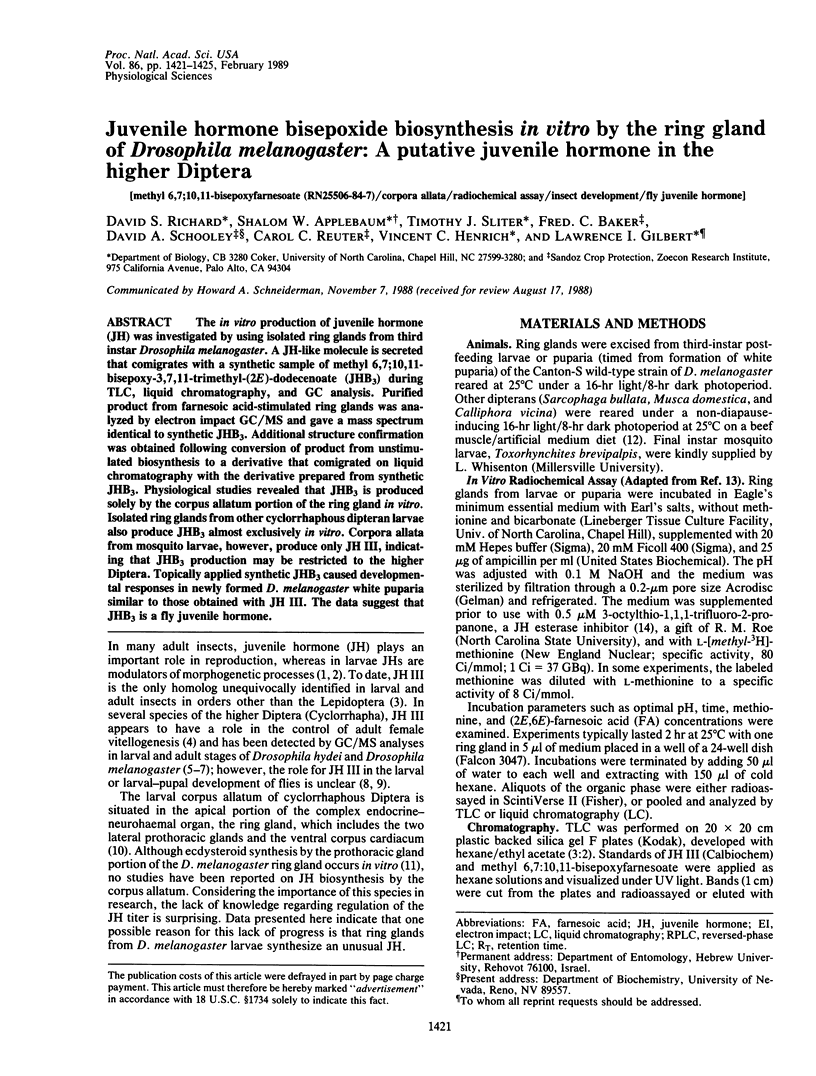
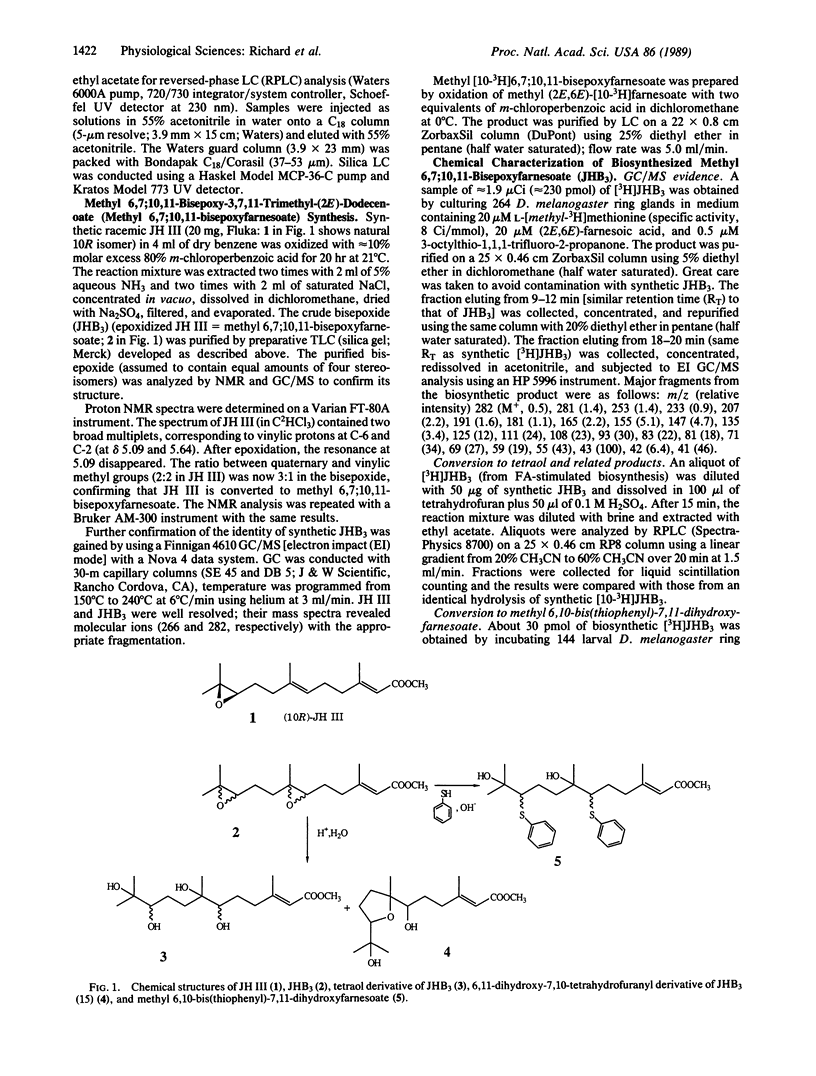
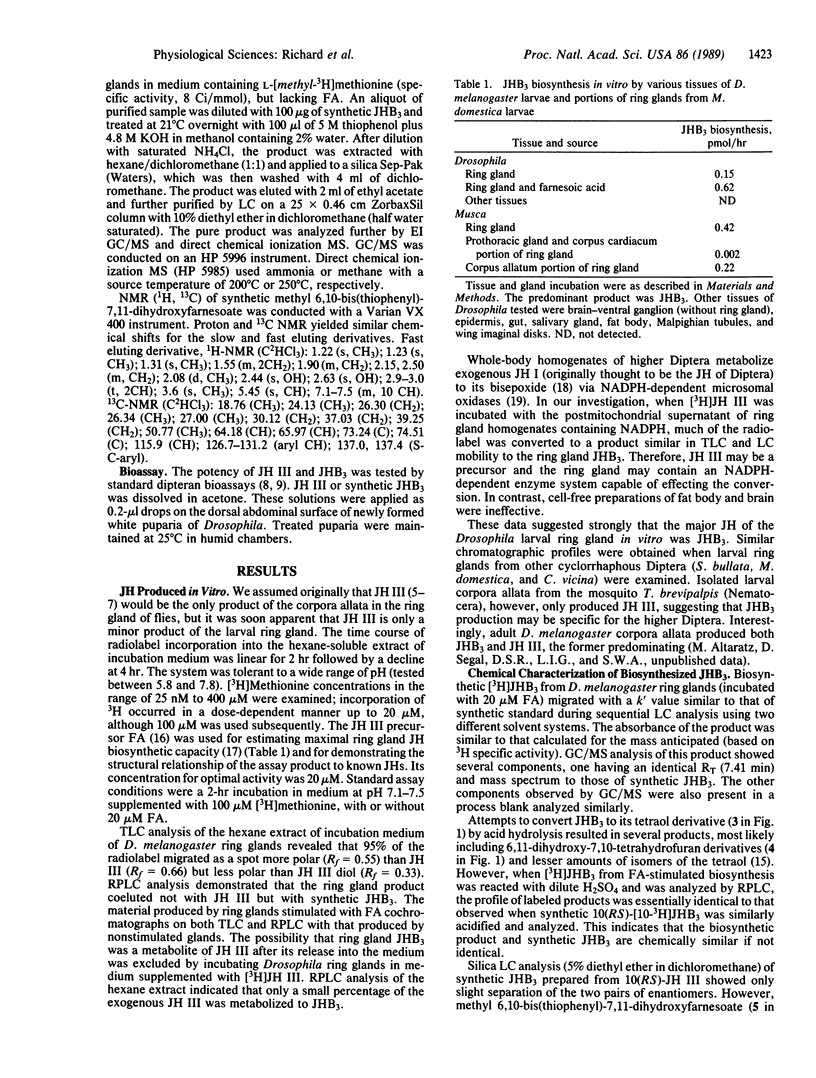
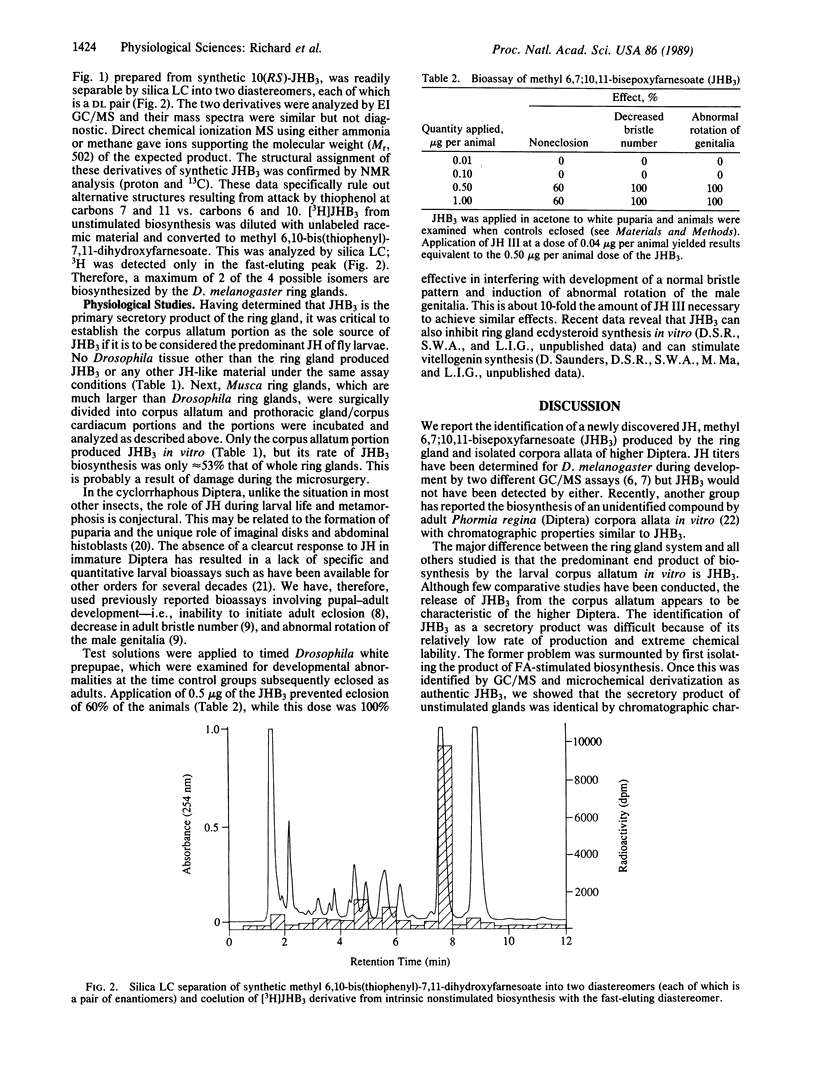
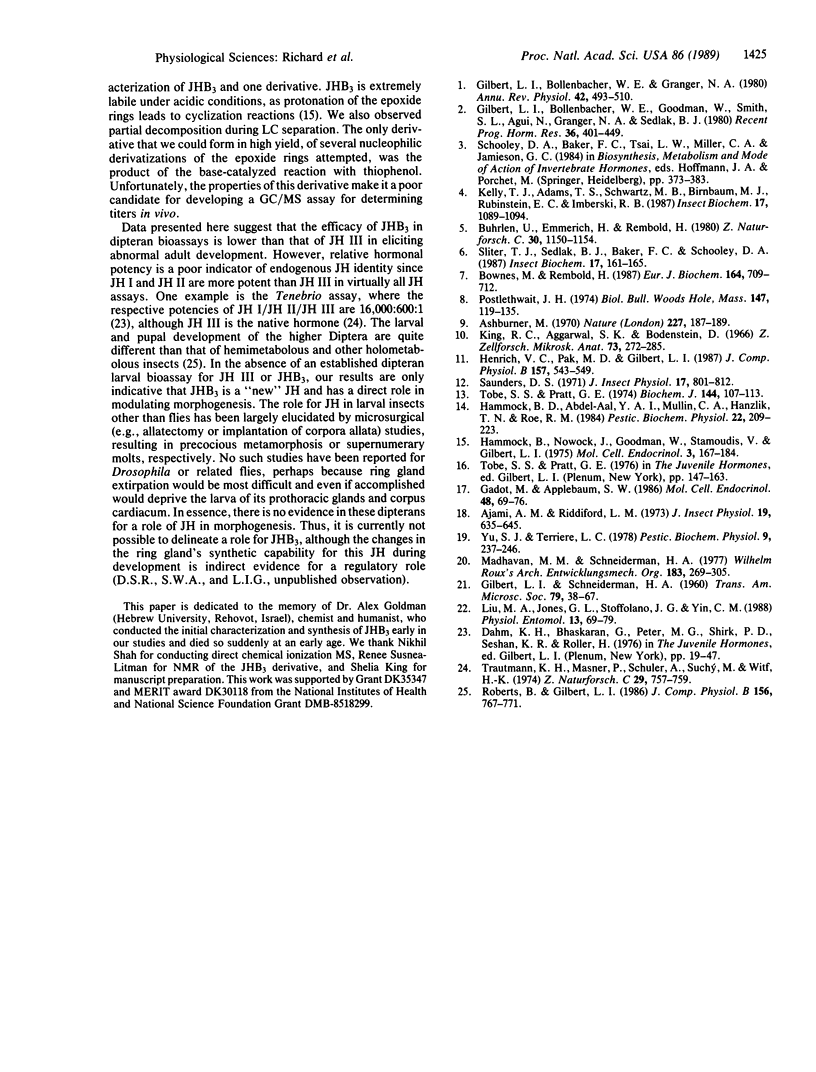
Selected References
These references are in PubMed. This may not be the complete list of references from this article.
- Ashburner M. Effects of juvenile hormone on adult differentiation of Drosophila melanogaster. Nature. 1970 Jul 11;227(5254):187–189. doi: 10.1038/227187a0. [DOI] [PubMed] [Google Scholar]
- Bownes M., Rembold H. The titre of juvenile hormone during the pupal and adult stages of the life cycle of Drosophila melanogaster. Eur J Biochem. 1987 May 4;164(3):709–712. doi: 10.1111/j.1432-1033.1987.tb11184.x. [DOI] [PubMed] [Google Scholar]
- Gadot M., Applebaum S. W. Farnesoic acid and allatotropin stimulation in relation to locust allatal maturation. Mol Cell Endocrinol. 1986 Nov;48(1):69–76. doi: 10.1016/0303-7207(86)90167-x. [DOI] [PubMed] [Google Scholar]
- Gilbert L. I., Bollenbacher W. E., Goodman W., Smith S. L., Agui N., Granger N., Sedlak B. J. Hormones controlling insect metamorphosis. Recent Prog Horm Res. 1980;36:401–449. doi: 10.1016/b978-0-12-571136-4.50017-6. [DOI] [PubMed] [Google Scholar]
- Gilbert L. I., Bollenbacher W. E., Granger N. A. Insect endocrinology: regulation of endocrine glands, hormone titer, and hormone metabolism. Annu Rev Physiol. 1980;42:493–510. doi: 10.1146/annurev.ph.42.030180.002425. [DOI] [PubMed] [Google Scholar]
- Hammock B., Nowock J., Goodman W., Stamoudis V., Gilbert L. I. The influence of hemolymph-binding protein on juvenile hormone stability and distribution in Manduca sexta fat body and imaginal discs in vitro. Mol Cell Endocrinol. 1975 Sep;3(3):167–184. doi: 10.1016/0303-7207(75)90043-x. [DOI] [PubMed] [Google Scholar]
- Henrich V. C., Pak M. D., Gilbert L. I. Neural factors that stimulate ecdysteroid synthesis by the larval ring gland of Drosophila melanogaster. J Comp Physiol B. 1987;157(5):543–549. doi: 10.1007/BF00700973. [DOI] [PubMed] [Google Scholar]
- King R. C., Aggarwal S. K., Bodenstein D. The comparative submicroscopic morphology of the ring gland of Drosophila melanogaster during the second and third larval instars. Z Zellforsch Mikrosk Anat. 1966;73(2):272–285. doi: 10.1007/BF00334868. [DOI] [PubMed] [Google Scholar]
- Postlethwait J. H. Juvenile hormone and the adult development of Drosophila. Biol Bull. 1974 Aug;147(1):119–135. doi: 10.2307/1540573. [DOI] [PubMed] [Google Scholar]
- Roberts B., Gilbert L. I. Ring gland and prothoracic gland sensitivity to interspecific prothoracicotropic hormone extracts. J Comp Physiol B. 1986;156(6):767–771. doi: 10.1007/BF00694249. [DOI] [PubMed] [Google Scholar]
- Tobe S. S., Pratt G. E. The influence of substrate concentrations on the rate of insect juvenile hormone biosynthesis by corpora allata of the desert locust in vitro. Biochem J. 1974 Oct;144(1):107–113. doi: 10.1042/bj1440107. [DOI] [PMC free article] [PubMed] [Google Scholar]
- Trautmann K. H., Masner P., Schuler A., Suchý M., Wipf H. K. Evidence of the juvenile hormone methyl(2E,6E)-10,11-epoxy-3,7,11-trimethyl-2,6-dodecadienoate(JH-3) in insects of four orders. Z Naturforsch C. 1974 Nov-Dec;29(11-12):757–759. doi: 10.1515/znc-1974-11-1218. [DOI] [PubMed] [Google Scholar]


